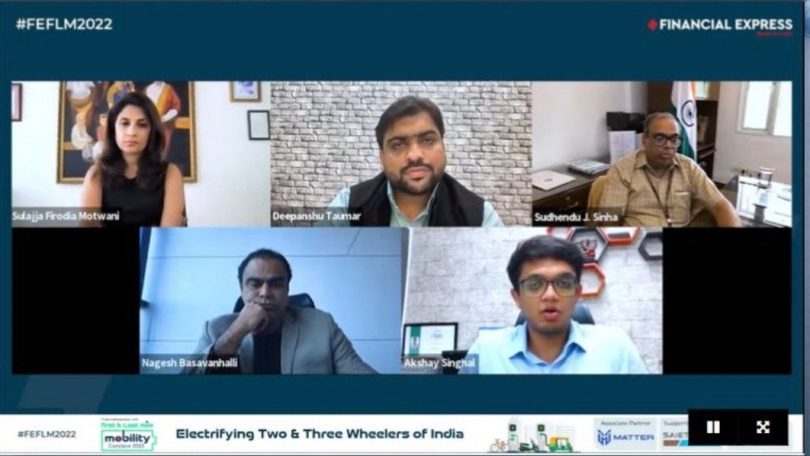[ad_1]
In the recent past, electric vehicles have taken the centre stage in the Indian automobile industry as the government’s bid to reduce pollution and oil import bills are taking shape with 100 products launching in electric two- and three-wheeler space especially in the last two to three years.
Startups, OEMs and component manufacturers eye the billion-dollar opportunity of the sunrise industry. As per the estimates, the electric vehicles sector in India is poised to reach approximately $206 billion (Rs 15,97,942 crore) by 2030.
However, the issues such as range anxiety, ownership cost and overall viability have been addressed in the form of various solutions such as central and state government incentives for purchasing electric vehicles but fast charging and battery swapping have opened up the doors for electric vehicles.
The government has launched the PLI (Production Linked Incentive) scheme to incentivise the local production of electric vehicles. On other hand, EV manufacturers are collaborating and working together to increase the localisation and reduce the overall cost of manufacturing. But, technically 60 percent of the total cost of electric vehicles comprises components such as batteries, thermal dynamics management systems, battery packs, electric motors and power electronics which are unique to electric vehicles.
In this area, the government has taken efforts by bringing in a PLI scheme of Rs 18,000 crore for advanced chemistry cells.
A panel discussion on the topic of Making India Atmanirbhar In EV Manufacturing was hosted by The Financial Express at First & Last Mile Mobility Conclave. The panel Mr Sudhendu J Sinha, Adviser (Infrastructure Connectivity – Transport and Electric Mobility), NITI Aayog; Mr Nagesh Basavanhalli, Group CEO, Greaves Cotton; Ms Sulajja Firodia Motwani, Founder & CEO, Kinetic Green and Dr Akshay Singhal, Founder & CEO, Log 9 Materials. The session was moderated by Mr Deepanshu Taumar, Vertical Lead – Express Mobility, The Financial Express (Digital).
“The entire electric mobility is being driven by technology. We have been able to connect many of the CTOs of the OEMs with the IITs so that they come out with solutions for this very specific problem statement. However, internationally it is acclaimed that India has very quickly taken electric mobility forward in a very structured manner within the three years,” said Sinha.
He added that probably what is missing is that the localisation percentage of electric vehicles has to gradually go up and that would come only once we start manufacturing our advanced chemistry cell in India. This would be the time when a substantial portion of an electric vehicle would be made in India, and this is what we can be able to say we have become Atmanirbhar in electric vehicle manufacturing.
Bengaluru-based startup Log9 which has been actively working on batteries for electric vehicles Dr Singhal was of the viewpoint that battery localisation and development are key for scaling up EV adoption in India. It is also important to do this sustainably and with the reliability of performance and life because you look at the kind of operating conditions – whether it is climate conditions in terms of temperature and weather profiles or the type of vehicles we are trying to commercialise first.
“It is important to have technologies which are designed keeping these conditions in mind otherwise we will continue to face safety, life expectancy, performance issues,” he added.
Pointing out the faster adoption of electric vehicles, especially in the two and three-wheeler segment, Greaves Cotton’s Basavanhalli said, “India is capable and poised to become a leader by 2030. This could be the leapfrog moment for the Indian automotive industry on the global stage. Running on clean energy is important, maybe solar or any other form of clean energy. I believe shortly lithium cell chemistry is going to be around and it is, for me, probably in the near-term future.”
Kinetic Green’s Motwani said, “there’s a very bright future ahead for electric mobility in India, especially the last mile which is dominated by two and three-wheelers and the buses. It is a great relief for consumers who commute daily and great relief from pollution.”
She added that the quest to localise the battery components is ongoing. Battery swapping would enable faster adoption of new technology because customers can use the latest technology in the market.
[ad_2]
Source link








